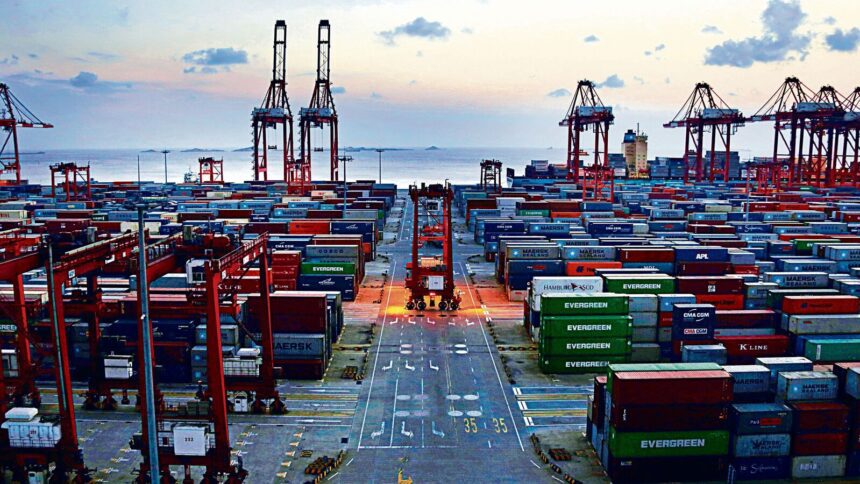The Ministry of Commerce is preparing to lead discussions for the India-US Bilateral Trade Agreement (BTA) and will soon provide a checklist to various ministries, including defence, electronics and information technology, consumer affairs, agriculture, education, mines, steel, heavy industries, science and technology, and labour. This effort is aimed at better aligning India’s tariffs with the US duty structure, according to sources who spoke under the condition of anonymity.
“A checklist that identifies products for tariff alignment will be distributed to these ministries. Their feedback will be crucial in the negotiations with US officials regarding the terms of reference for the BTA,” one of the sources said.
The objective is to address US grievances regarding elevated tariffs on specific products, fostering a more equitable trade environment. In addition, India is advocating for reciprocal tariff reductions in the forthcoming BTA, as reported by Mint. This initiative follows the reciprocal tax strategy introduced by former US President Donald Trump, intended to impose analogous tariffs on product categories where significant discrepancies exist.
Also read |
However, the requested inputs are only for negotiation purposes and do not imply that India will implement policies favoring US companies, as noted by the source, who emphasized that policy modifications will arise from both parties.
Addressing Tariff Challenges
India has already implemented various tariff adjustments on items scrutinized by Trump. The import duty on motorcycles has been reduced from 50% to 30%, on ethernet switches from 20% to 10%, and on bourbon whiskey from 150% to 100%. Mint reported on 15 February that India aims to counter Trump’s reciprocal tariffs proposal with evidence demonstrating that the majority of imports from the US into India have duties lower than 10%.
Beyond examining tariff regulations, the Ministry of Commerce has also directed the Department for Promotion of Industry and Internal Trade (DPIIT) to further streamline procedures in certain sectors to encourage foreign direct investment (FDI), added another source.
India’s backchannel communications with the US, coordinated with the Ministry of External Affairs, helped it evade the initial wave of US tariff actions that affected Canada, Mexico, and China. New Delhi is apprehensive about the repercussions of reciprocal tariffs on its vital exports to the US, which include engineering goods, textiles, pharmaceuticals, and electronics. India exports more than 7,300 commodities to the US, covering gems and jewellery, pharmaceuticals, textiles, engineering goods, organic chemicals, IT services, automobiles, agricultural products, and metals.
Queries sent via email on Friday to spokespeople from the Ministries of Commerce, External Affairs, and related departments went unanswered.
Also read |
“We are exploring potential policy changes, if necessary, to support firms, including US companies, that regard India as a favorable investment hub,” the third source indicated. Discussions surrounding the proposed changes are centered on making compliance measures like Quality Control Orders (QCOs) more conducive to investment, the source added.
India’s QCOs have raised concerns among various countries, as they view them as non-tariff barriers restricting their products. Numerous nations, including the US, have submitted a total of 35 specific trade concerns (STCs) over time to the World Trade Organization regarding India’s quality control orders.
Nevertheless, India has defended these policies, asserting they are designed to ensure market surveillance, prevent misleading practices, and safeguard human, animal, or plant health.
“Certain ministries have also been assigned to reassess policies to promote research collaboration with US research institutions,” remarked the fourth source.
The US stands as India’s largest trading partner and is among the few countries with which India maintained a trade surplus in 2023-24. Major exports from India to the US include electrical and engineering goods, electronic items, gems and jewellery, pharmaceuticals, light crude oil, and petroleum.
India-US Trade Relationships
India’s merchandise exports to the US have shown a consistent upward trend. Exports reached $75.6 billion in FY22, increasing to $78.3 billion in FY23, highlighting a stronger trading bond. Although FY24 experienced a slight drop to $77.5 billion primarily due to disruptions in the supply chain, the long-term growth trajectory remains robust.
Also read |
In FY24, bilateral trade between India and the US hit an all-time high of $118.2 billion, compared to $128.8 billion in FY22. For FY24, India enjoyed a trade surplus of $36.8 billion with the US.
During FY24, Indian exports to the US totaled $77.5 billion, while American exports to India reached $40.7 billion. The US ranks as India’s third-largest investor, with total FDI inflows of $65.2 billion recorded from April 2000 to March 2024.
“If enacted, the reciprocal tariff strategy announced on 13 February by the Trump administration could greatly affect Indian exports, enabling the US to raise tariffs on countries with a trade surplus,” warned Ajay Srivastava, founder of the Global Trade Research Initiative (GTRI).
Key items exported from India to the US include engineering goods ($17.6 billion), electronic products ($10 billion), gems and jewellery ($9.90 billion), drug formulations and biologicals ($8.72 billion), petroleum products ($5.83 billion), and ready-made garments with accessories ($4.71 billion), among others in FY24.
Trump, who took office on 20 January, imposed a 25% tariff on imports from Mexico and Canada, a 10% duty on Canadian energy products, and a 10% increase in tariffs on Chinese imports, fulfilling a key campaign promise and heightening trade tensions.
Also read | C
However, the tariffs on Mexico and Canada were suspended until 4 March following negotiations, while China has contested the US tariffs at the WTO.
On 10 February, Trump declared a 25% tariff on all steel and aluminium imports, set to take effect on 12 March, removing previous exemptions and quota arrangements. Subsequently, the US announced on 18 February its intention to impose a 25% tariff on pharmaceutical imports.










